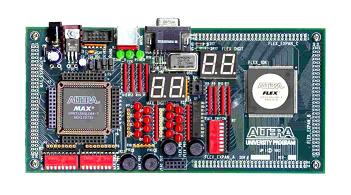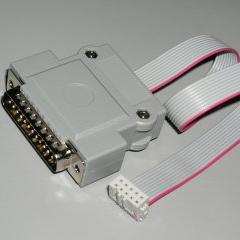Project Info
Author: Chris
Difficulty: Easy-Medium
Time Invested: 2 Hours
Prerequisites:
You will need a UP1 or UP2
development board.
Author: Chris
Difficulty: Easy-Medium
Time Invested: 2 Hours
Prerequisites:
You will need a UP1 or UP2
development board.
For this tutorial it is not 100% vital that you have the UP2 board, you could alternatively use the CPLD Dev Board from previous tutorials. The Altera UP2 board is inexpensive at about $99 and it is a great platform for learners, while the CPLD dev board from my tutorials is markedly less expensive to make and leaves the door wide open for peripheral expansion.
VHDL - VHSIC Hardware Description Language
VHSIC - Very-High-Speed Integrated Circuits


Purpose & Overview of this project
The goal of this tutorial is to further our understanding of VHDL syntax and code using the UP-2 platform. VHDL will allow us to create our own circuits inside the CPLD by simply programming it with the ByteBlaster MV. In this tutorial we will make an 8-Bit counter program and run it on the UP-2 Board.